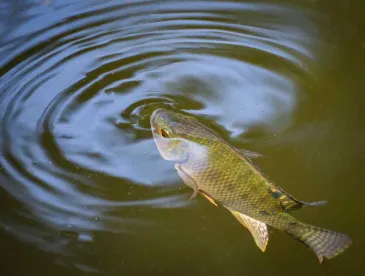As we noted in our July 7 post, consistent with President Biden’s Executive Order 13990, the U.S. Fish and Wildlife Service (FWS) and the National Marine Fisheries Service (NMFS) (collectively, the “Services”) plan an ambitious redo of their Endangered Species Act (ESA) implementing regulations. Kicking off that process, on October 27, 2021, the Services published two proposals in the Federal Register to rescind critical habitat regulations promulgated by the Trump Administration. Endangered and Threatened Wildlife and Plants; Regulations for Listing Endangered and Threatened Species and Designating Critical Habitat, 86 Fed. Reg. 59,346 and 86 Fed. Reg. 59,353 (Oct. 27, 2021). Each of the proposed rules will be subject to a thirty-day public comment period – through November 26, 2021. The Services may issue final rules by early 2022.
First, the Services propose to rescind the final rule that defined the term “habitat” for the purposes of critical habitat designation. 86 Fed. Reg. 59,353. See our January 5, 2021, blog post for more detail on the habitat rule. The habitat definition was developed in response to the U.S. Supreme Court’s November 27, 2018, unanimous decision in Weyerhaeuser Co. v. U.S. Fish & Wildlife Service, 139 S. Ct. 361 (2018), which held an area is eligible for designation as critical habitat under the ESA only if the area is actually habitat for that species.
The final rule, which was issued solely for the purpose of critical habitat designations, defined habitat as “the abiotic and biotic setting that currently or periodically contains the resources and conditions necessary to support one or more life processes of a species.” 85 Fed. Reg. 81,411 (Dec. 16, 2020). The Services now propose to rescind the habitat definition because it excludes areas that do not currently or periodically have the resources and conditions necessary to support one or more life processes of a species, and the Services would prefer to be able to designate areas that could have those conditions in the future (e.g., after restoration activities or other changes).
As support for the proposal to rescind the rule, the Services state the following:
-
The habitat definition and preamble to the rule inappropriately constrain the Services’ ability to designate areas that meet the definition of “critical habitat” under the ESA;
-
The definition of habitat would allow the Services to exclude areas that “do not currently or periodically contain the requisite resources and conditions, even if such areas could meet this requirement in the future after restoration activities or other changes occur”;
-
The ESA’s definition of conservation, which contemplates use of a range of tools to further the goal of recovering species, and the statute’s recognition of destruction or loss of habitat as a factor in the decline of listed species “indicates that areas not currently in an optimal state to support the species could nonetheless be considered ‘habitat’ and ‘critical habitat.’” Including those areas in critical habitat designations, where appropriate, “may be essential for the conservation of some species”;
-
The definition includes overly vague terminology and did not stem from the scientific literature nor clearly relate to the statutory definition of critical habitat; and
-
Relying on the best available scientific data, on a case-by-case basis, is the best way to determine whether unoccupied areas are habitat for a species.
A final rule rescinding the habitat definition could be issued by early 2022. If the definition is rescinded, the Services will return to their prior approach where there was no regulatory definition of “habitat,” and they may be more likely to designate areas as critical habitat that lack conditions necessary to support life process of the relevant species.
Second, FWS proposes to rescind the December 18, 2020 regulation that revised FWS’s process for considering exclusions whether to exclude areas from designation as critical habitat pursuant to ESA § 4(b)(2). 86 Fed. Reg. 59,346. The ESA authorizes the Services to exclude particular areas from a designation of critical habitat, if the benefits of exclusion outweigh the benefits of inclusion, taking into account economic, national security and other impacts of designation. In February 2016, under the Obama Administration, the Services issued a joint policy describing how they determine whether to exclude areas from critical habitat designations. In December 2020, FWS, under the Trump Administration, issued a final rule specifying the process for exclusion determinations. 85 Fed. Reg. 82, 376 (Dec. 18, 2020). This rule superseded the 2016 policy.
The proposal acknowledges FWS is adopting commenters’ criticisms of the 2020 exclusion rule to support its reversal of position, noting that the rule:
-
Provides too much weight to proponents of exclusions and to parties “directly affected” by designations;
-
Is too “rigid, thereby limiting the Service’s exercise of discretion; and
-
Created confusion because it applies only to FWS, while NMFS continues to apply the 2016 policy.
A final rule could be issued by early 2022. FWS proposes to rescind this regulation in its entirety and revert to implementation of the Services’ regulations, 50 C.F.R. § 424.19 and the Services’ 2016 policy on § 4(b)(2) exclusions. As a result, FWS would have more discretion whether to exclude areas from a future designation of critical habitat.





 />i
/>i
